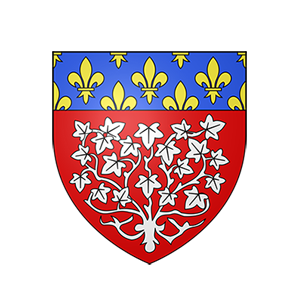
Amiens
Home > Amiens
Amiens is located at the meeting point of three rivers: the Somme, the Selle and the Avre. Historically, its economic and social life is turned towards water and wetlands, which have largely contributed to its growth: water mills, shipping … and are today an important part of its living environment and its recreational and tourist offer.
The city, whose historical heart is crossed by 40 kilometers of canals, has mainly been spread on the slopes of the valleys, so the vegetated or water surfaces resulting from peat exploitation and vegetable crops have been preserved; more particularly its Hortillonnages: 265 hectares site, where 67 kilometers of “rieux” have created hundreds of islands occupied by vegetable and pleasure gardens. They contributed to the construction of the Our Lady of Amiens cathedral, a gothic jewel, and a UNESCO World Heritage site, built according to legend, on a field of artichokes donated by market gardeners.
Amiens has different types of wetlands: permanent rivers/streams/creeks, including waterfalls; permanent saline/brackish/alkaline marshes/pools; permanent freshwater marshes/pools; non-forested peatlands; wetlands dominated by bushes; freshwater, tree-dominated wetlands; and canals and drainage channels, ditches.
Amiens organizes its development outside wetlands. In support of proactive political choices, the Local Urban Plan of Amiens classifies the main wetlands present as “natural areas”, unqualifying them as building area. In addition, measures dedicated to natural areas are applied, like Special Conservation and Special Protection Areas from the Natura 2000 network. Finally, the city integrates the presence of wetlands into the definition of its projects, as well as their implementation.
The omnipresence of water in the city requires preservation and restoration of wetlands. The thick network of rivers and streams is a key element of flood management in the infrastructure of the urban area. In addition, the city will develop and manage six public spaces, with more than 80 hectares dedicated to recreation, wetlands restoration and promotion. Finally, restoration actions of branches of the Somme are underway, in order to restore ecological continuity.
The City Council took a deliberation to develop its territory along the river while respecting the wetlands. They unanimously affirmed that “preserving, protecting and enhancing the wetlands of the city, and more widely of our territory, is a priority” and formalized a coherent urban project. The communities act to maintain several hundred hectares of market gardening in the valley bottom, by professionals and individuals. They also rely on the river tourism development, by promoting the arrival by boat within the urban area.
The City Council relies on 26 neighbourhood committees, associations, open to all people, to exchange under a charter of local democracy. The dialogue with young people takes place within the Municipal Youth Council. Civil society manages at least 50% of the territory’s wetlands, through owners and users associations. The communities finance 2 to 4 of their projects per year and signed an agreement with an NGO to develop wetland-friendly projects on their territory.
The community has a proactive policy of raising awareness among young people, on topics directly related to wetlands and water management. Its program, with 31 events in 2018, has a budget of approximately €150,000 and produces around 6,000 sessions/child per year. For other audiences, multiple activities are offered: 10 guided tours and 1 to 3 chantier nature per year, and a permanent presence on site during the summer months. The city has also mobilized for World Wetlands Day. In 2019, it promoted the event and more than 15 actions.
The city applies stringent national standards, and primarily treat water, household wastes and some businesses ones. Amiens Métropole manages the wastewater of nearly 55,500 households, including 48,600 by collective sanitation and 96 companies, reducing pollution by more than 90%. It maintains a network of 646 km of pipeline and 9 treatment units.
For wastes, it covers 175,300 inhabitants and almost 100 companies and, in 2018, handled 116,037 tonnes, of which more than 64% were valued.